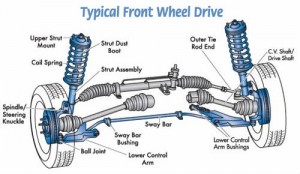Even though cars are among the many types of vehicles on our roads today, other vehicle types for instance vans, pickups and buses make up the vehicles we see every day on the road. Since all of them do not have the same weights, sizes and even applications, there has never been a one-size-fits-all formula for suspension design. Of all suspension designs used today, the most advanced are those used for luxury sports cars and sedans.
Starting with the beam axle and leaf springs designs that draw their inspiration from horse-drawn buggies, recent high-end performance suspensions for cars feature multilink suspension designs. Components of these suspensions are normally made from lightweight materials, mainly aluminum, that give much lower unsprang weight as opposed to engraved steel. Furthermore, these suspensions are perfected by high durometer bushings and shock absorbers with extraordinary performance. Top performance car manufacturers sometimes use shock absorbers that have magnetic fluids whose damping rate is electronically controlled. But then again, these are vehicles proposed for road use where the quality of the ride and handling performance are vital.
The other band for vehicle suspensions would be suspensions meant for off-road vehicles. Rather than being focused on ride quality, vehicle suspensions for off-road use are majored on suspension travel, stability, and strength and ground clearance. It is more practical to use beefy suspension arms and oversized long-travel shock absorbers if you really want your vehicle to be suitable for off-roading. When it comes to a four-wheel drive vehicle, dependability and power are crucial factors to consider, and so it is very common to see live axle suspensions being used regularly today. Actually, most die-hard off roaders change independent front suspensions of their 4-wheel drive vehicles to a live axle basically because of the strength and in-built power in this suspension design. Incidentally, mid-size crossovers are automatically disqualified, even if they are armed with all-wheel drive. Even some SUV manufacturers never attempt to promote their AWD SUVs as off-road vehicles. A good example is the BMW’s X5.
The types of vehicle suspension especially for utility vehicles fall between the types mentioned above. Pick-ups and Vans are normally supposed to carry people and heavy loads, and in some cases both at the same time. Because of this, the type of suspension employed are independent front suspension layout that have a coil-sprung multilink suspension locating a live axle at the back side of the vehicle. These days, some car manufacturers give crossover vehicles fully independent suspensions front and back. Although they look like heavy duty vehicles, mid-size SUVs that use this car suspension type will not be able to tow heavy loads.
